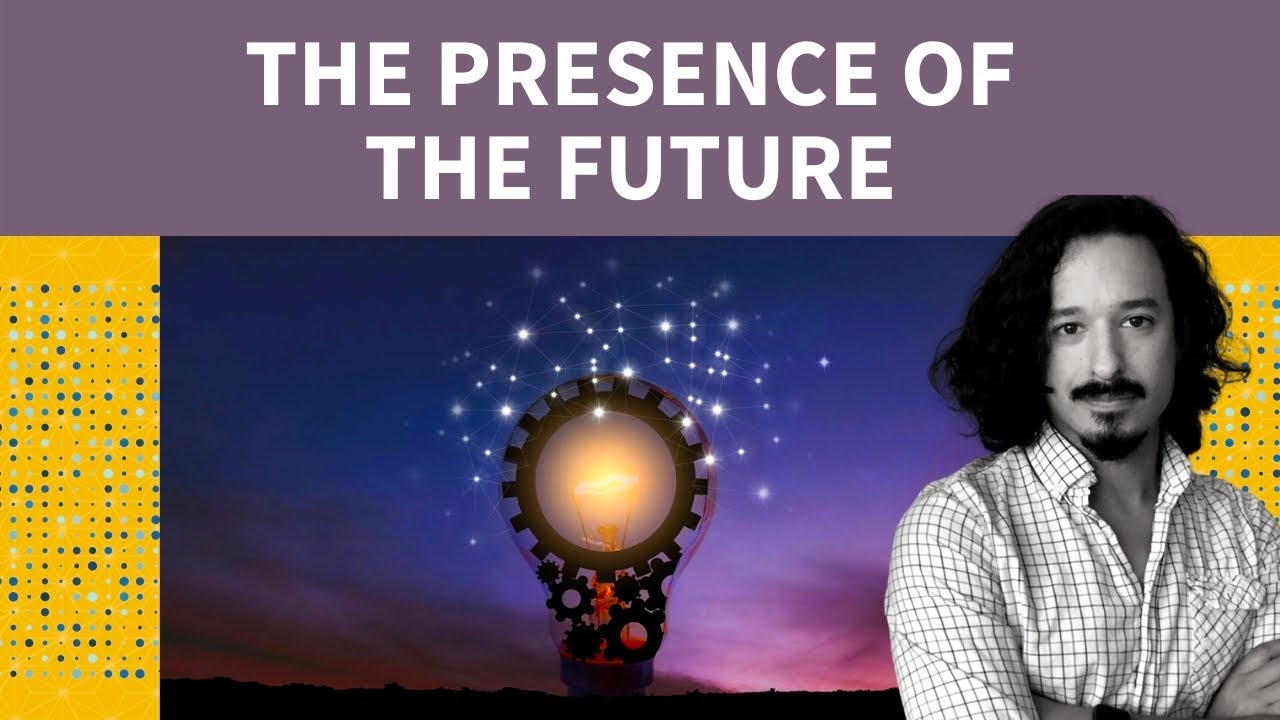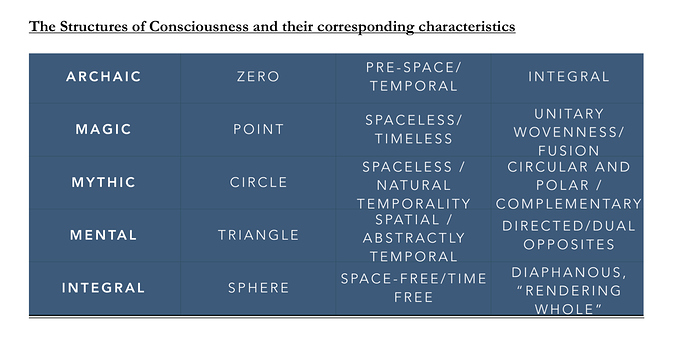Hi again Jeremy. Thanks for your lucid answers and thorough explanations.
I asked about the graphic, not because I recognized it as a mechanical clock (I didn’t) and saw the irony in that, but because it was suggestive to me of the symbol for Venus/female/the feminine. Listening to your Daily Evolver discussion, I was getting the sense that Gebser’s approach to the structures of consciousness was that they were parallel and perhaps linked to one another, rather than their being ranked; heterarchical rather than hierarchical. So the two things together, my sense of the graphic and what I was hearing from you and Jeff, gave me a sense of Gebser having a more what is typically called “feminine” approach to his integralism. I was getting a sense of immanence penetrating his work, which sort of fits given he didn’t support a “transcend-and-include” evolutionary view.
As I listened, I did hear you say that there was at least some sequentiality to the structures, by virtue of the dimensionality assigned them. The chart you provided here does seem to have the structures listed in order of their “irruption” in the “active process of history.” But I wondered: if they were listed in another way on a chart–say Magical at the top and moving downward to Mental, Archaic, Integral, Mythic, without concern for their order of appearance in time and culture–would that accurately illustrate Gebser’s approach as well?
And I did hear you say that Gebser’s approach requires holding unfoldment and emergence (or “leaping/springing forth”) at once, as well as an appreciation for discontinuity and non-linearity.
What I especially liked about Gebser’s approach, hearing you talk with Jeff about it, was the use of symbolic motifs from art and literature to elucidate aspects of the structures. And I also appreciated hearing examples of the Mythical structure taken from ancient (Meso- and Neolithic) earth-and-sky-based cultures. Did he also look at Axial Age religion/philosophy to illuminate the Mythical? You said that his Mythical structure needs “updated;” can you possibly say a little more about that?
I did read the Gebser “Integral Consciousness” article you provided a link to, and also the piece on turiya (which I was already familiar with). And I also read the Wikipedia page on Gebser, a brief synopsis which, if accurate (and it sounds like it from what you spoke of during the Evolver episode), brings more clarity on his approach, at least for me.
One of the statements in the Wikipedia article, about the Magical structure—"…symbols or statues do not just represent events, objects, persons, but are those same objects and persons" (paraphrased)—is so totally shamanic. Tuvan shamans, for instance, don’t think of their drums as symbols of the horse; the shaman’s drum is a horse that transports them, that they “ride” into nonordinary realities/“worlds”/states of consciousness. Another statement, that the distinguishing characteristic of the Magical structure is “an awareness that nature must be listened to,” also exemplifies the shamanic worldview. The “secret language” that Eskimo shamans were/are known to sing during rituals and ceremonies is considered by researchers to be at least in part (and only in part) based on onomatopoeia, or the imitation of animal sounds and other aspects of nature (wind, water, etc.).
So anyone who is desiring to bring more magic into their lives or the world, listen up  here are some hints! I’ve heard people lament about this a lot, the lack of magic in the world/their lives, and it occurs to me that it is coinciding with a time in culture in which people are not listening even to one another of their fellow human beings. So listening should definitely be at the top of many agendas, and I personally advocate listening to nature; there’s a lot of stillness and silence there in that sound
here are some hints! I’ve heard people lament about this a lot, the lack of magic in the world/their lives, and it occurs to me that it is coinciding with a time in culture in which people are not listening even to one another of their fellow human beings. So listening should definitely be at the top of many agendas, and I personally advocate listening to nature; there’s a lot of stillness and silence there in that sound  .
.
All in all, I found your talk and what I’ve read useful and Gebser’s approach totally delightful in terms of its simplicity and emphasis on artistic motifs and symbols, and its emphasis on how time is perceived/lived in/enacted with the different structures of consciousness. The definition you gave (above) for sphericity is meditation-worthy. I’m glad you’ve brought this to us, and in a really exciting way, as Jeff said. Thank you. I too once was really into Rilke, so that seems another connection for me to the essence of Gebser.
I do find Gebser’s structures of consciousness complementary to the study of Wilber’s integralism, but also, less sophisticated. One wonders if Gebser had been born at a later time, or lived longer, how his work might have developed. Would he have identified a postmodern structure? Would he have delved into the developmental theories of psychology? Would his views have changed regarding evolution, progress, development? Time, time, time–so influential and not at all, huh?
More that I could say, ask about, but I’ll stop now. Whatever here you have “time” and opportunity to respond to, much appreciated! I hope you’re having a nice day.
![]()
![]()
![]()



 here are some hints! I’ve heard people lament about this a lot, the lack of magic in the world/their lives, and it occurs to me that it is coinciding with a time in culture in which people are not listening even to one another of their fellow human beings. So listening should definitely be at the top of many agendas, and I personally advocate listening to nature; there’s a lot of stillness and silence there in that sound
here are some hints! I’ve heard people lament about this a lot, the lack of magic in the world/their lives, and it occurs to me that it is coinciding with a time in culture in which people are not listening even to one another of their fellow human beings. So listening should definitely be at the top of many agendas, and I personally advocate listening to nature; there’s a lot of stillness and silence there in that sound  .
.